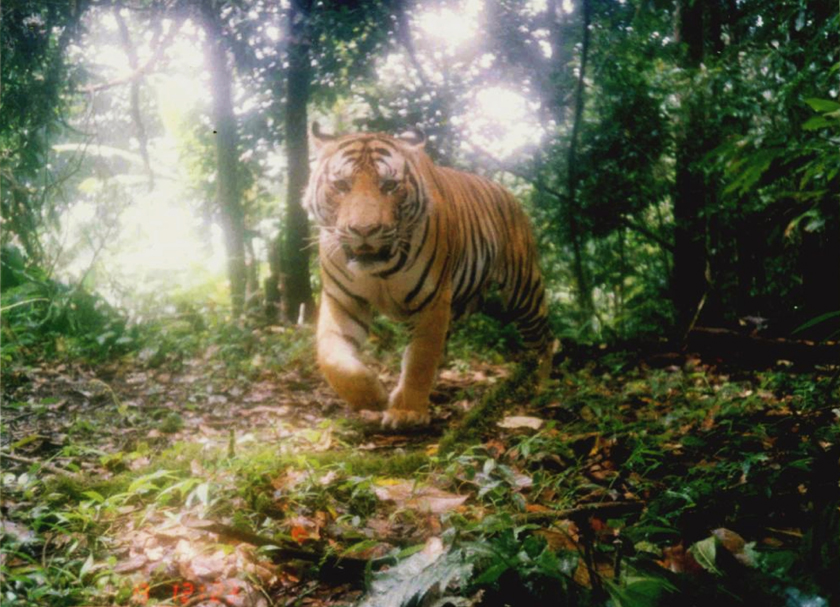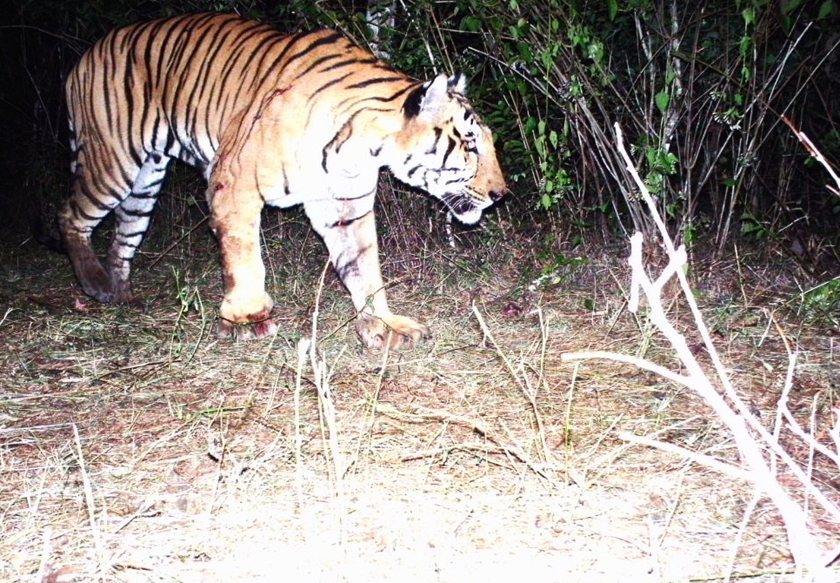Catching The Right Tiger Saves The Innocent (Human And Cat)
By Vicki Croke
When a tiger kills a person or habitually targets livestock, how do you single out the perpetrator to be relocated, especially in one of the most tiger-dense areas of the world?
It turns out, the stripes are a giveaway.

Using camera traps and stripe pattern-matching software, researchers with WCS have found a way to quickly ID individual tigers. Photo: WCS.
Using camera traps and stripe pattern-matching software, researchers with the Wildlife Conservation Society and its partners have found a way to quickly ID and track individuals, which reduces human-wildlife conflict and helps save lives—both human and animal.
“The vast majority of tigers generally avoid humans and focus only on natural prey species,” said Dr. Ullas Karanth, WCS’s Director for Science-Asia. “Using scientific methods to locate individuals involved in conflict with humans and livestock helps us to mitigate threats to people and prevent the capture of the wrong tigers, especially wherever tigers may venture beyond protected area borders.”
The details of the program are laid out in a scientific paper titled “Photographic Database Informs Management of Conflict Tigers” in the latest version of the journal Oryx. Karanth is the lead author.
According to WCS:
Since the initiation of the research protocol, more than 750 tigers have been identified from six protected areas in the Malenad Tiger Landscape in the Western Ghats across India. The system also enables researchers to keep track of other data such as home range locations, age and sex of individual animals, activity patterns. Over the longer term it even enables estimation of survival and recruitment rates and changes in numbers, all of which can be used to inform management decisions on wild tigers.
Two tigers from adjoining national parks in South India have recently been captured and placed in nearby zoos. One was an older cat who, perhaps, no longer able to catch natural prey, killed a person. The other was a younger animal who roamed outside of the protected area and killed livestock.
This part of India–the Malenad Tiger Landscape in the southwest—has about 400 tigers, one of the largest populations in the world.
According to the wild cat conservation group Panthera, there are fewer than 3,200 tigers left in the wild today, in less than 7 percent of their former range. Three subspecies have become extinct.



One Response to “Catching The Right Tiger Saves The Innocent (Human And Cat)”
I don’t know why people kill Tigers for making money. The government should take strict action against those tiger killers. Those stupid idiot people.
Comments are closed.